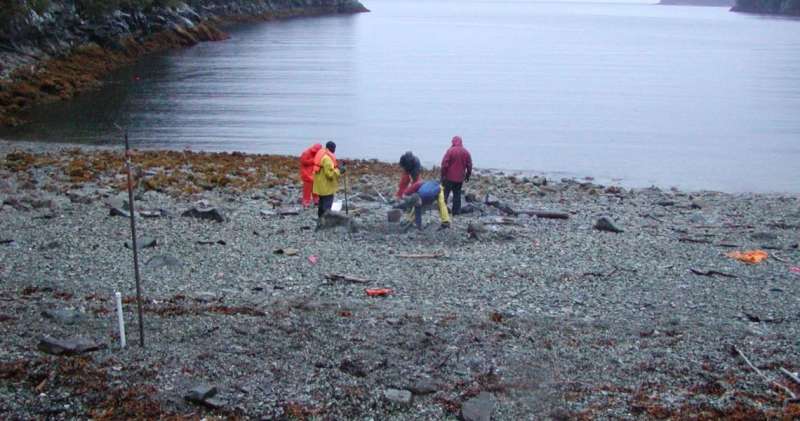A crab's eye view of rising tides in a changing world

Coastal ecosystems and aquifers will be greatly affected by climate change, not only from rising temperatures and more volatile weather, including changes in precipitation patterns, but also from sea level rise.
In the search for methods to analyze these effects, researchers at NJIT have identified powerful statistical tools that should help coastal scientists both measure and anticipate changes in conditions such as subsurface water temperature and salinity. Results from the study, funded by the National Oceanic and Atmospheric Administration, have been published in Scientific Reports.
The tools, known as spectral and co-spectral techniques, required a large data set for validation, which the authors obtained from two beaches in Prince William Sound in Alaska. In particular, they looked at the impact of sea level variability on these beaches, collecting a year's worth of data on water pressure, water temperature and salinity at thirty-minute intervals from sensors embedded in the sand.
Using these techniques to identify trends within the data, they found that at most locations, the effects of sea level rise were first seen in the water pressure in aquifers, followed by changes in salinity and then temperature. Following in the wake of the other two leading indicators, or warning signals, it appears that changes in temperature would take longer to be felt inland than rising salinity.
"Changes in the temperature were sometimes seen a week later than both rising water pressure and salinity. We attribute this to soil grains acting as a thermal buffer, absorbing a non-negligible fraction of the heat carried by seawater and fresh groundwater. Thus, even if the sea temperature should change suddenly, it would take a week or more for its effects on coastal aquifers to subside," said Michel Boufadel, director of NJIT's Center for Natural Resources Development and Protection (NRDP), a professor of environmental engineering and an author of the study.
Water pressure was the first to change as water is incompressible and thus transmits pressure rapidly. Rising salinity, by comparison, is mitigated by the spreading and dilution of seawater when it interacts with fresh groundwater coming from the upland behind the beach.
"All of these changes, including the off-kilter sequence of salinity and temperature fronts at a particular locale, could have ramifications for animal and plant life in the aquifer ecosystem," said Xiaolong Geng, a postdoctoral fellow at NJIT and an author of the study. "We believe that regular data-keeping at short intervals will allow us to also monitor the pace and dynamics of change in these vulnerable regions."
In particular, the researchers say, in conditions of low soil permeability where changes in water pressure and temperature are typically distantly connected, current predictive models that extend out beyond a week would likely decline in accuracy. Such approaches would need to be "anchored" to regular collection of data on water pressure, salinity, and temperature in the way meteorological models are corrected by measurements at given times and locations, such as at rain stations at airports. The researchers conclude that measurements of coastal ecosystem features should take place at once per week or more.
More information: Xiaolong Geng et al, Spectral responses of gravel beaches to tidal signals, Scientific Reports (2017). DOI: 10.1038/srep40770
Journal information: Scientific Reports
Provided by New Jersey Institute of Technology














